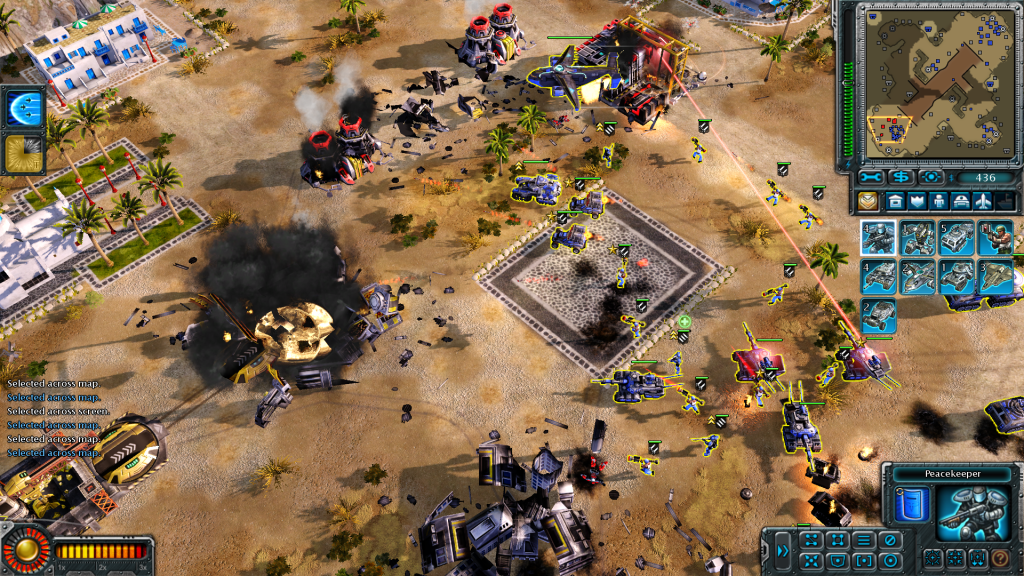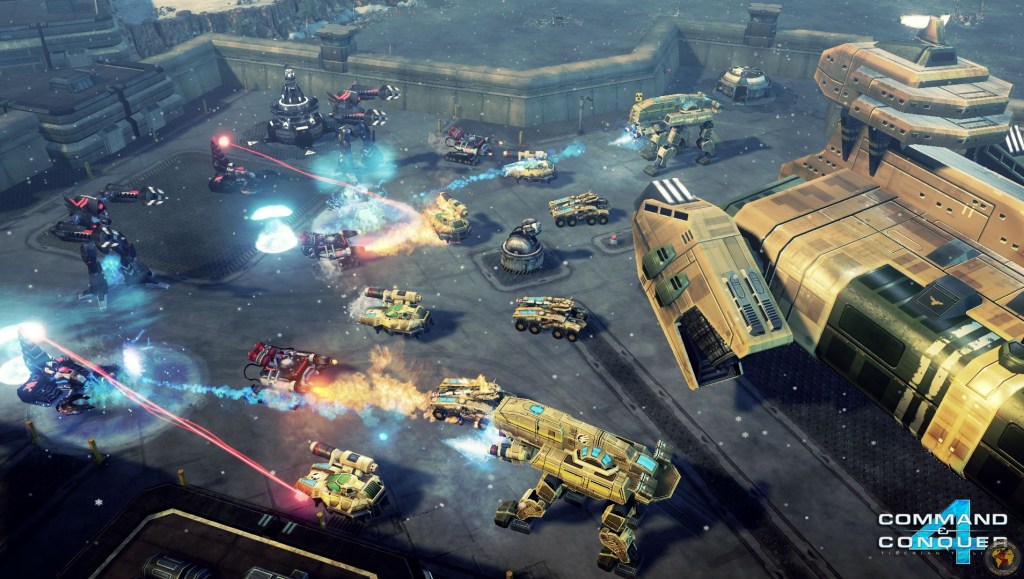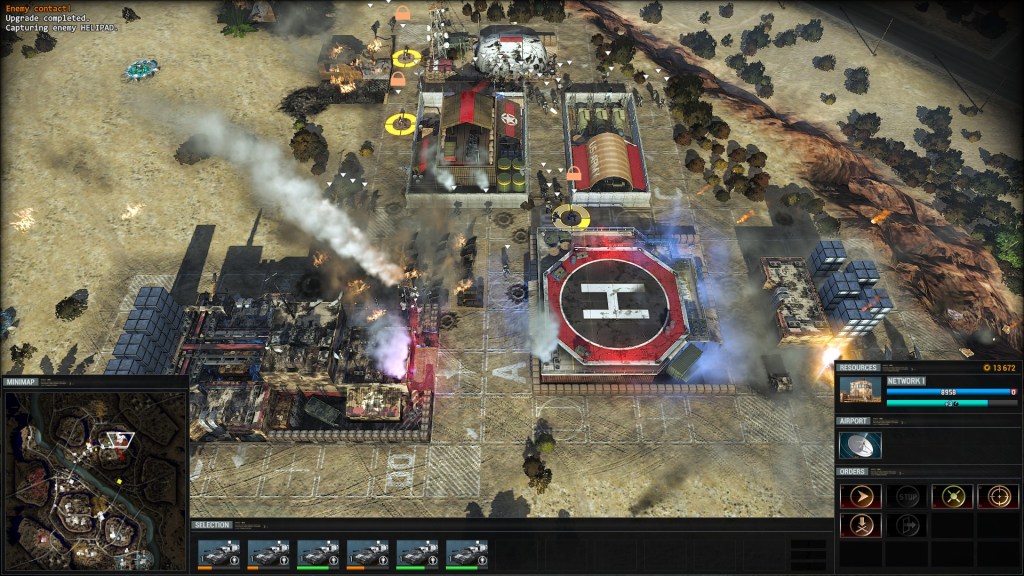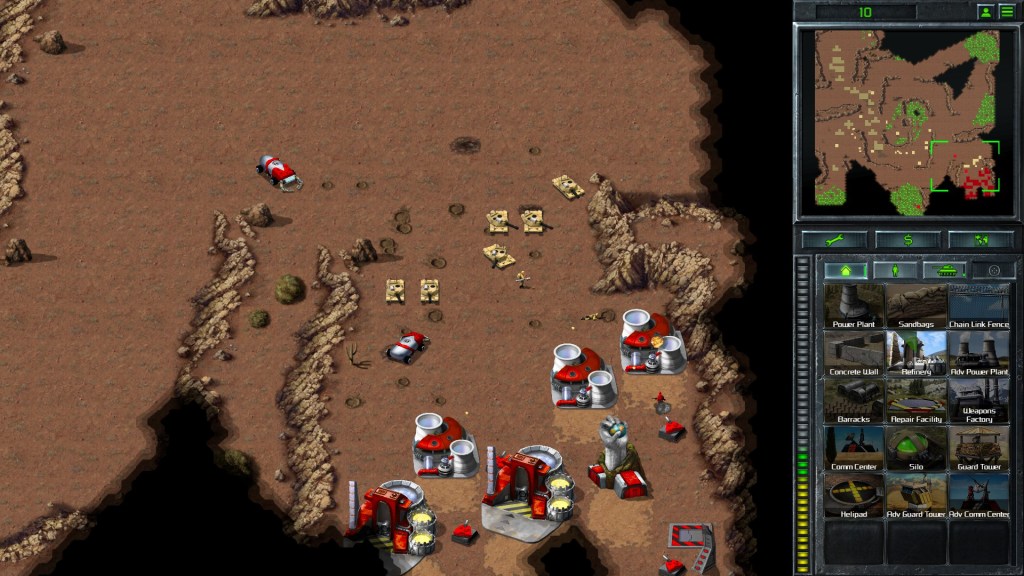It’s funny. I have something like 40 games installed on my personal computer and all but about 2 of them are strategy games of some variety. They’re not all RTS: I have Total Warhammer 2 installed for instance, and Total War: Troy, and Warhammer 40K Gladius. I also just got and have begun a playthrough of XCOM 2, for instance.
But strangely, I keep coming back to Command and Conquer Remaster. Now, I didn’t actually play this as a kid: my first real RTS was Warcraft: Orcs and Humans. I feel at this point that I’m dating myself a bit, but that’s OK. I am proud that I lived through so much gaming history.
Anyway, I was thinking recently how funny it is that with StarCraft 2 and Age of Empires 3 and Homeworld installed on my machine, I kept coming back to this old game that doesn’t have shift-queueing and doesn’t have real fog of war, and whose units and balance are limited and simple and let’s be honest, a bit skewed. When I first bought C&C Remastered last year, I expected to get a bit of enjoyment out of it and then quickly bounce off to more modern, complex, and complete games.
And yet here we are.
Now, a part of this is assuredly that in many ways C&C95 (I have trouble calling it Tiberian Dawn since that, to the best of my knowledge, was not the original name of the game) is less stressful to play than something like StarCraft 2 or Company of Heroes 2. Jump into a match, and 5-10 minutes later it’s basically done, and even in that short time you’ve had several clashes with your enemy. Even if the match ends with something like 1000 bikes and buggies eating your ConYard for breakfast, it’s over quickly and you can jump back into a new match with less than 15 minutes lost to your ignominious defeat.
That’s definitely part of it. The Command and Conquer games I tend to focus on: C&C95, Kane’s Wrath, and Red Alert 3, all tend to have pretty quick match times compared to most other RTS, and even in a 7 minute match in each of these games, you’re likely to have several clashes with your opponent.

In some ways, these games are all about churning out a ton of units and throwing them into your enemy’s army (or armies). You don’t have to worry about researching any tech, nor any unit special abilities. Just make buildings, make tanks, and get to it. There’s something almost refreshing about the simplicity, and just enough complexity in terms of when to build, what to build (having a second vehicle production structure is really important, especially against Nod who can almost always snipe a building if they’re really trying) and its unit interactions to keep me coming back.
The other C&C games I mention above are similar in terms of the mechanical demands they put on the player in terms of getting an economy up and running (while adding depth as well as convenience of course), while also having more depth in terms of unit interactions and choice in terms of tech progression, as well as having more consistent and understandable tech progression (for some reason I have trouble keeping various unit unlocks in C&C95 in my head).
C&C95, even more than Red Alert, is limited and skewed. Faint praise for a game that I keep coming back to, maybe, but absolutely accurate. Only a handful of units are really competitively viable, and as GDI winning can be a huge uphill battle, since a lot of the best tools for aggression and harassment, like attack helicopters and bikes and buggies, are only available to Nod. But in a way, that can kind of take the pressure off a bit. It’s so frenetic and kludgy and imprecise in terms of engagements that it can let you feel ok with a loss in a perverse sort of way.
Not that necessarily as a game designer I’d want to take too many design lessons from the direct mechanics and rules of C&C95. There’s lessons to be gleaned from each of the C&C games (yes, even Tiberian Twilight!) But sometimes, that simplicity is a breath of fresh air.

All of the C&C games share this to an extent (with the possible exceptions of Red Alert 3 and Generals: Zero Hour). Light on unit abilities and relying more on timings, flanking, and seat-of-the-pants, “oh crap!” desperation reactions, Command & Conquer allows me to play an armchair general and not… worry so much about keeping up with an extended build order as in StarCraft or Supreme Commander. There’s something about being able to sell off buildings that you don’t need, or rid yourself of them before your opponent can kill them off, coupled with the ability to train an infantry unit in 6 seconds or a tank in 12, that can (in the best of times) allow you to shift and react and just hold it together long enough to try to make something happen.
Of course it’s not always this way, and I’m not trying to say that C&C95 is a particularly spectacular game. Rather, that it’s just good enough to keep me coming back due to its simplicity, the ease at which you can just sit down and churn out a ton of Grenadiers and Medium Tanks and try to fight your way to victory. There’s no need to build 18 Barracks and 20something factories, there’s no fiddly upgrade timings or Dark Templar or missing with Psionic Storm. It’s… sometimes… refreshingly simple, and refreshingly easy. The lack of depth is offset by the smoothness of the gameplay, perhaps?
The other C&C games keep this balance regarding ease of playing offsetting any potential lack of depth (for me). For the record, I do not think that Red Alert 2 nor Red Alert 3 nor Kane’s Wrath etc are shallow games anyway, but they all have this same feeling of just being able to slide into the gameplay that I find addictive. Win or lose – and let me tell you the latter happens a lot more often than the former – at least it’s over quickly (most of the time anyway).

On a whim I recently loaded up Act of Aggression: Reboot Edition, and one thing that really stands out to me coming back to it is that it feels cumbersome and unfriendly for some reason. It’s hard to put my finger on exactly what its core issues are, but for sure the tech tree feels kind of muddy: what is the next thing I need to unlock or build? Where do I go from here? It feels like it makes you guess, I guess? There’s a lack of clarity there that frustrates me.
When it comes down to it, depth and gameplay variety is a big part of what keeps a game around long term. There’s a reason, after all, why Brood War and Age of Empires 2 and StarCraft 2 have such longevity. But for me, at least sometimes, simplicity has an attraction all its own. And to me, lately, Command and Conquer: Remastered and Kane’s Wrath have been scratching that itch.
Actually, I occasionally dip into the Steam version of Z as well. It’s one of the oldest games I still have installed, and while it’s a little long in the tooth and the AI isn’t as good as I recall it being in the original version, it’s another one of those games whose simple yet satisfying gameplay systems for which I have an enduring affection.

The race to capture territory, the positioning game of troops and tanks, the struggle to make use of those damn grenades that soldiers throw away like they’re going out of style… In some ways, it’s actually relaxing (if such a term could be applied to a competitive game) compared to games with deeper and more involved systems like Company of Heroes 2 or StarCraft 2. At the very least, the approachability is something I’m really appreciating in my games right now.



Tiberian Dawn IS the official name, actually. It wasn’t called that on the boxes, but it is referred to as that in multiple official documents from that time.
In fact, in Germany the game did in fact get the sub-title “the tiberium conflict”.
Furthermore, calling it C&C95 is doubly wrong; that’s specifically the name of the Windows 95 port of the game. Which was made in 1997, after Red Alert, using Red Alert’s higher resolution graphics code.
LikeLiked by 2 people
Thanks for setting me straight!
LikeLike